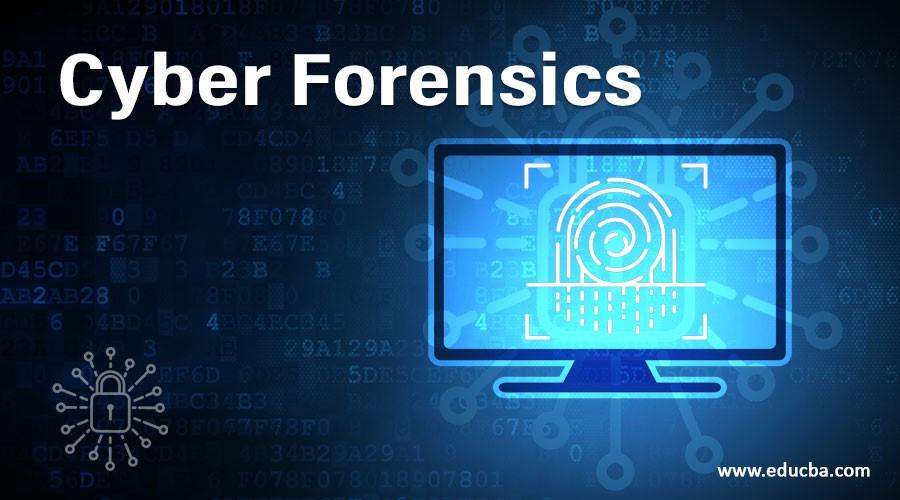



Cyber Forensic often known as digital forensic, is an essential subfield of forensic science concerned with the analysis and retrieval of data from electronic devices. Cyber Forensic is the practice of using scientific methods to gather, examine and store digital evidence. It is closley related to computer forensics.
Integrating countermeasures against cybercrime, it relies heavily on cyber security forensics. Cybercrime is becoming increasingly sophisticated along with the advancements of technology. Experts in digital forensic are called cyber forensic experts because of their expertise in tracing and analyzing the digital trails left by criminals. From corporate espionage to criminal offenses, this field plays a vital part in unveiling hidden truths. In partnership with cyber fornesic companies, law enforcement agenices harness cutting-edge techniques to solve complex crimes, bridging the gap between traditional investigation methods and modern technological challenges.
Types of Crimes in Cyber Forensics
Here are some common types of crimes :
Hacking
Unauthorized access to computer systems, networks or devices with the intent to steal data or cause damage. Hackers may exploit vulnerabilities in software or use techniques such as phishing, malware or brute force attacks to gain access.
Malware Attacks
Malicious software is used to compromise computer systems or steal sensitive information. Types of malware includes viruses, trojans, ransomware, spyware and keyloggers. Cyber forensic analysts investigate malware infections to identify the source, behaviour and impact of the attack.
Data Breaches
Unauthorizes access to confidential or sensitive information stored in databases, servers or cloud storage. Data breaches can result in the theft of personal information, financial records, intellectual property and trade secrets. Cyber forensic investigations focuses on determining the extent of breach and mitigating the damage.
Identity Theft
The Fradulent use of someone else's personal information to commit crimes or financial fraud. Cyber forensic experts trace the digital trail left by identity thieves to uncover evidence of unauthorized access, account takeovers or fraudulent transaction.
Online Fraud
Deceptive schemes or scams conducted over the internet to deceive victims into providing money, personal information or access to their accounts. Cyber forensic investigations aim to identify perpetrators, track financial transactions and recover stolen assets.
Cyberbullying and Online Harassment
The use of digital communication platforms to harass, intimidate or threaten individuals. Cyberbullying can take various forms, including harassment, defamation and posting personal information online. Forensic analysis of digital communications, social media activity and online forums can help identify perpetrators and gather evidence for legal actions.
Intellectual Property
Unauthorized use, reproduction or distribution of copyrighted material, trade secrets or proprietary information. Cyber forensic techniques are used to investigate intellectual property theft, including digital piracy, corporate espionage and insider threats. Investigators analyze digital assets, communication and network traffic to identify theft patterns and protect intellectual property rights.
Cyber Espionage
State - sponsored or industrial espionage conducted through cyber means to steal sensitive information, gain competitive advantage or sabotage rival organization. Cyber forensic experts investigate cyber espionage activities, including reconnaissance, infiltration and sabotage, to identify threat actors and assess the impact on national security or economic interests.
Financial Cybercrimes
Financial frauds and cybercrimes targeting individuals, businesses or financial institutions. Examples include credit card fraud, online banking fraud, cryptocurrency scams and money laundering. Cyber forensic investigations focus on tracing financial transactions, identifying money trails and gathering evidence for prosecution.
These are just few examples of how the diverse range of cybercrimes that cyber forensic professional encounter. As technology continues to evolve, new forms of cyber threats and criminal activities emerge, highlighting the importance of ongoing research, training and collaboration in the field of cyber forensics.
Techniques and tools used in Cyber forensic
Techniques
Tools
Conclusion
In Conclusion, the power of cyber forensics in solving crimes cannot be overstated. As technology continues to advance, so do the methods used by criminals to commit cybercrimes. Cyber Forensic techniques and tools play a vital role in investigating, analyzing and reconstrucitng digital evidence to uncover the truth behind cyber incidents.
Moreover, cyber forensics not only helps in solving crimes but also serves as a deterrent against crimes but also serves a deterrent against future cyber threats. By understanding the tactics and techniques used by cybercriminals, organiziations and law enforcement agencies can enhance their cybersecurity measures and better protect digital assests.
As technology evolves and cyber threats evolve along with it, the field of cyber forensics will continue to play a critical role in maintaining security and upholding the rule of law in the digital realm. Cyber Forensic has enormous potential and holds forth the possibility of transformative future that is both safer and more just.